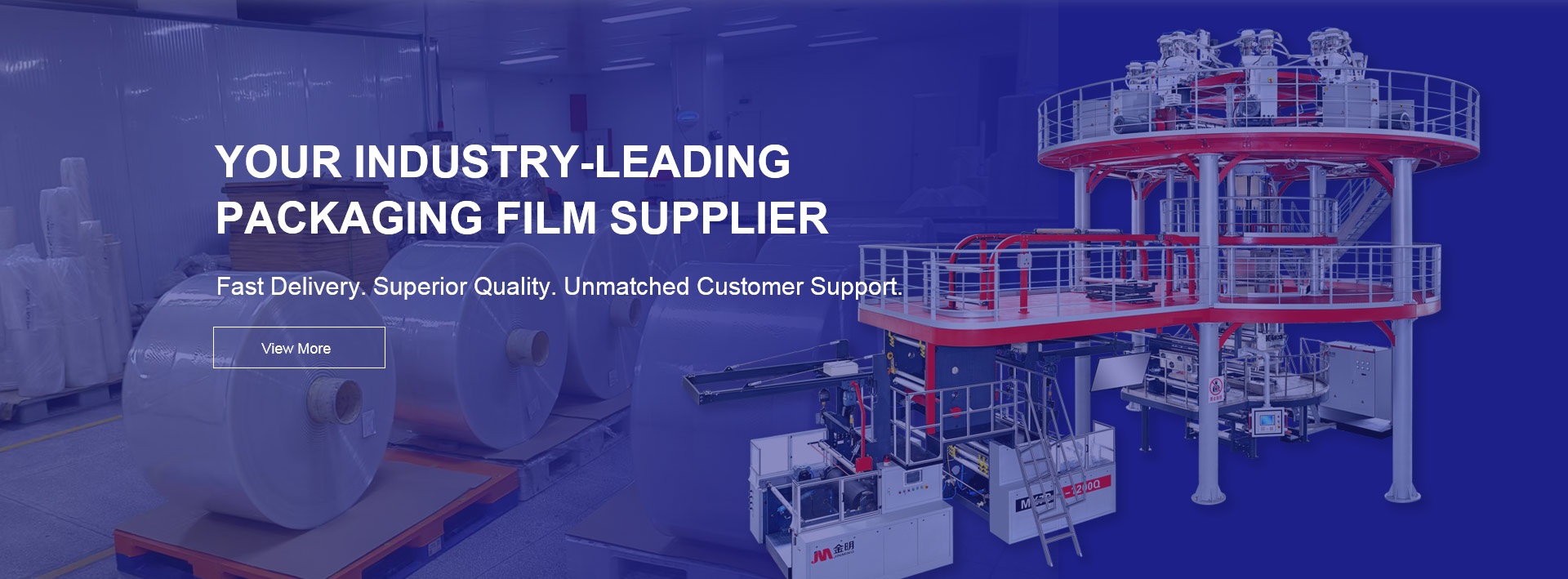
Flexible film packaging—often simply called “flexible packaging” or “flex pack”—refers to packaging made from pliable materials (films, laminates, foils, or combinations thereof) that can easily change shape when filled or sealed. In contrast to rigid packaging like boxes, glass, or metal containers, flexible film packaging adapts to the product it encloses, offering advantages in cost, space, and performance.
Flexible film packaging typically comprises one or more layers (laminates) of materials such as polyethylene (PE), polypropylene (PP), polyester (PET), aluminum foil, nylon (PA), or barrier polymers like EVOH. Each layer adds a different function—sealability, barrier against moisture/oxygen, mechanical strength, printability, or durability.
Some packages may be monolayer (a single film) when requirements are minimal, but many modern packages use multilayer structures to balance cost and performance.
Once a product is placed and sealed, the package can conform, bend, or compress. It does not maintain a rigid shape. This flexibility allows the packaging to cushion or adapt to varying contents or volumes.
A key design challenge is to ensure reliable sealing (heat seal, ultrasonics, or adhesives) and adequate barrier protection (against oxygen, moisture, UV, aromas). Depending on the product (food, pharmaceuticals, chemicals), the internal environment may require precise control, which is achieved through carefully engineered layer combinations.
Flexible film packaging comes in various forms to suit different products, industry requirements, and use cases. Here are common types:
Pouches
Stand-up pouches (with gussets)
Flat pouches
Retort pouches (for thermal sterilization) Flexible pouches are among the fastest-growing formats, offering excellent space efficiency and strong branding options.
Bags and Sachets
Simple bags (open-top, side-gusseted)
Sachets for single-use samples or small portions These are cost-effective and ideal for low-volume or trial products.
Wraps, Films, and Sleeves
Shrink film, stretch film (used for bundling or overwrapping)
Flexible lidding films (for sealing trays or containers)
Sleeves (sleeve labels, wrap-around)
Liners and Bag-in-Box Systems For bulk liquids or powders, liners inside boxes allow flexible containment with support from a rigid outer shell.
Flexible Tubes and Spouted Pouches Used especially in personal care, cosmetics, or liquid products, they allow controlled dispensing.
Flexible film packaging has gained widespread use due to many advantages:
Material & Shipping Cost Reduction Because it uses thinner films compared to rigid shells, material usage is lower. The lightweight nature reduces freight costs and carbon emissions.
Space Efficiency Flexible packages take up less volume, both empty and filled. They allow better utilization of shelf space and warehousing.
Barrier & Protection Despite their flexibility, multilayer designs offer strong barriers to moisture, oxygen, light, and odors. This helps preserve food freshness, protect pharmaceuticals, and increase shelf life.
Design Flexibility & Branding Flexible films allow high-quality printing, custom shapes, and value-added features (zipper, tear notch, spout), giving brands more room to differentiate.
Consumer Convenience Easy tear, resealable closures, spouts, and compactness make flexible packaging more user-friendly.
Faster Production & Scalability Flexible packages can often be produced quickly in large volumes via roll-to-roll processes, helping brands meet demand efficiently.
Lower Environmental Impact (Potentially) The lightweight and efficient use of materials can reduce carbon footprint during transport and storage. Moreover, advances in recyclable and compostable films are gradually improving sustainability.
While flexible film packaging offers compelling benefits, it also faces technical and market challenges:
Recycling and End-of-Life Options Multi-material laminates are difficult to recycle. Many flexible packages are not accepted by standard recycling streams. Efforts toward mono-material designs, recyclability improvements, or compostable films are ongoing but not universally adopted.
Seal Integrity & Leakage Risks Weak or inconsistent seals can lead to product spoilage or leaks. Ensuring consistent sealing under manufacturing stress is essential.
Mechanical Durability Thin films may be prone to punctures or abrasion; selecting robust layers or reinforcement is vital for certain products (sharp edges, heavy load).
Barrier Limits For extremely demanding barrier needs (e.g. high oxygen sensitivity over long shelf life), rigid or semi-rigid packaging sometimes remains preferred.
Cost Trade-offs Though materials cost is lower, high-performance films or specialty barrier laminates may be expensive. The balance must be aligned with product needs.
Regulatory & Food Safety Compliance Especially in food, pharmaceuticals, or cosmetics, flexible packaging materials must meet contact safety standards. Migration, contaminant control, and certifications must be managed.
Flexible film packaging is now ubiquitous in many sectors:
Food & Beverage Snack pouches, coffee bags, sauces,nuts, frozen foods, vacuum packs, and retort pouches.
Personal Care & Cosmetics Sample sachets, travel-size pouches, flexible tubes, refill pouches.
Pharmaceuticals & Healthcare Blister wraps, inner liners, foil-laminate pouches for tablets, single-dose sachets.
Household & Cleaning Products Refill pouches for detergents, concentrated liquids, multipacks in flexible film.
Pet Food & Animal Feed Resealable flexible bags for pet snacks or foods.
Industrial & Agricultural Bulk liners, flexible protective wraps, stretch films used for pallet stabilization.
When selecting a flexible packaging solution, consider:
Barrier Requirements Determine how much protection (against moisture, oxygen, light) your product needs, and choose appropriate film combinations.
Mechanical Strength Evaluate resistance to puncture, tearing, or abrasion based on the product’s shape, weight, and shipping stresses.
Seal & Construction Method Choose the sealing type (heat, ultrasonic, adhesive) and package style (pouch, tube, liner) that best match your filling and packaging equipment.
Print & Branding Needs Decide on print quality, effects (UV, matte, gloss), graphics layout, and label integration.
Consumer Features Features like resealable zippers, tear notches, spouts, or easy-open designs can increase product appeal.
Sustainability & Disposal Factor in recyclability, compostability, or reuse potential. Aim for mono-material designs when possible.
Cost vs. Performance Trade-offs Balance the cost of advanced barrier films against expected shelf life, product value, and return on investment.
Supplier Capabilities Partner with converters or suppliers that can support your volume, quality, innovation, and customization needs.
If you are searching for a reliable supplier for flexible film packaging materials, JINBORUN is worth exploring. As a manufacturer specializing in film and flexible packaging solutions, JINBORUN offers a range of flexible film materials, customization options, and production capabilities to meet brand-specific requirements. Their experience and product portfolio can help you execute high-quality flexible packaging projects while aligning with your technical and design specifications.